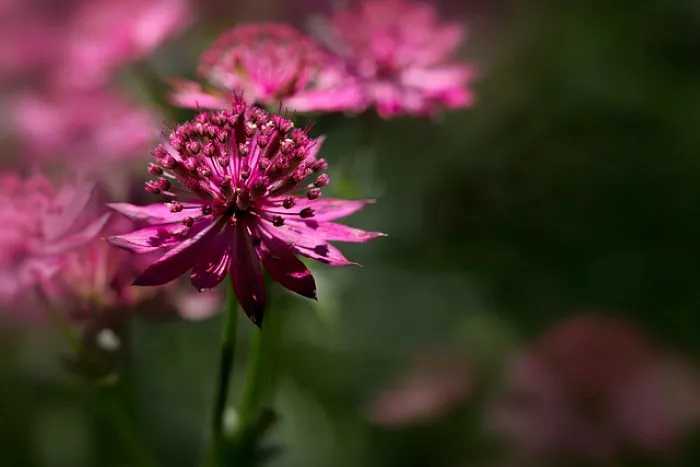Flowering plants, also known as angiosperms, are a diverse group of plants that play a crucial role in our ecosystems. They provide food, shelter, and oxygen, and they are essential for many forms of life. One of the most important aspects of flowering plants is their ability to reproduce. This article will explore the various methods flowering plants use to reproduce, focusing on their structures, processes, and the importance of reproduction in the plant life cycle.
Understanding Plant Reproduction
Reproduction in flowering plants can occur through sexual and asexual methods. Sexual reproduction involves the fusion of male and female gametes, leading to the formation of seeds. Asexual reproduction does not involve gametes and allows plants to produce offspring that are genetically identical to the parent plant. Both methods have their advantages and are vital for the survival of flowering plants.
Sexual Reproduction in Flowering Plants
Sexual reproduction in flowering plants is a complex process that involves several key structures and stages. The main components of sexual reproduction are flowers, pollination, fertilization, and seed development.
Flowers
Flowers are the reproductive structures of flowering plants. They contain both male and female reproductive organs. The male part of the flower is called the stamen, which consists of the anther and filament. The anther produces pollen, which contains the male gametes. The female part is called the pistil, which includes the stigma, style, and ovary. The ovary contains ovules, which house the female gametes.
Pollination
Pollination is the transfer of pollen from the anther to the stigma of a flower. This process can occur through various agents, including wind, water, insects, birds, and other animals. Some plants rely on specific pollinators, while others can be pollinated by multiple agents. Successful pollination is crucial for fertilization to occur.
Fertilization
Once pollen lands on a compatible stigma, it germinates and grows a pollen tube down the style to reach the ovary. This process allows the male gametes to travel to the ovules. Fertilization occurs when a male gamete fuses with a female gamete, resulting in the formation of a zygote. The zygote will develop into a seed within the ovule.
Seed Development
After fertilization, the ovule transforms into a seed, and the surrounding ovary develops into a fruit. The fruit protects the seeds and aids in their dispersal. Seeds contain the genetic material of the parent plant and can remain dormant until conditions are favorable for germination.
Asexual Reproduction in Flowering Plants
Asexual reproduction allows flowering plants to reproduce without the involvement of gametes. This method can occur through several mechanisms, including vegetative propagation, fragmentation, and apomixis.
Vegetative Propagation
Vegetative propagation is a common form of asexual reproduction. In this process, new plants grow from parts of the parent plant, such as stems, roots, or leaves. Common examples include:
Cuttings: A piece of the stem or leaf is cut from the parent plant and placed in soil or water to develop roots.
Rhizomes: Underground stems that grow horizontally and produce new shoots, such as in ginger and bamboo.
Tubers: Swollen underground stems that store nutrients and can sprout new plants, like potatoes.
Bulbs: Underground storage organs that can produce new shoots, such as onions and tulips.
Fragmentation
Fragmentation occurs when a part of the plant breaks off and develops into a new individual. This method is common in aquatic plants and some perennial species. For example, if a stem of a water lily breaks off, it can root and grow into a new plant.
Apomixis
Apomixis is a form of asexual reproduction that occurs without fertilization. In this process, seeds are produced from the ovule without the fusion of male and female gametes. The resulting seeds are genetically identical to the parent plant. This method is advantageous because it allows for rapid reproduction and colonization of favorable environments.
Importance of Reproduction in Flowering Plants
Reproduction is vital for the survival and evolution of flowering plants. It ensures the continuation of species and contributes to genetic diversity. Sexual reproduction allows for the mixing of genetic material, which can lead to new traits and adaptations. Asexual reproduction, on the other hand, enables rapid population growth and colonization of new areas.
Conclusion
Flowering plants use various methods to reproduce, including sexual and asexual reproduction. Sexual reproduction involves the intricate processes of flower formation, pollination, fertilization, and seed development. Asexual reproduction allows for the production of genetically identical offspring through vegetative propagation, fragmentation, and apomixis. Understanding these reproductive strategies is essential for appreciating the complexity and diversity of flowering plants. Their ability to reproduce effectively contributes to their success in a wide range of environments, making them a vital part of our ecosystems.

